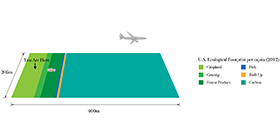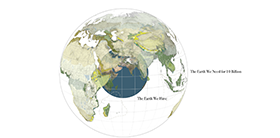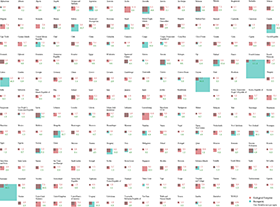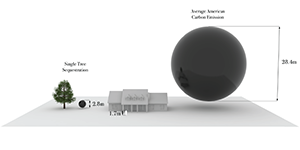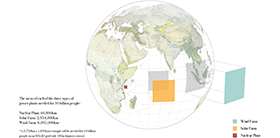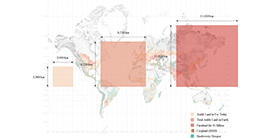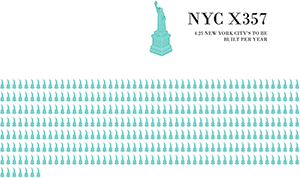
The illustrations in this section are called 'datascapes'; visualizations designed to make quantities which are otherwise hard to comprehend, intelligible. Data manifested in the visualizations are generally based on the ecological footprint of today's average American. For polemical purposes, this footprint is then extrapolated to a hypothetical 2100 global population of 10 billion people living at the same (American) standard. 1 The reason for using the figure of 10 billion people is that it is a round number roughly mid-way between the latest UN global population projections of between 9.5 and 13.3 billion people by 2100. 2
The datascapes show that if the global population were to live (in material terms) as contemporary Americans do, there would be a major discrepancy between levels of consumption and what the earth, according to today's technologies, can reasonably provide. The datascapes do not intend to be alarmist or pass moral judgment on high consumption lifestyles. What they do make clear, however, is that as large numbers of people aspire to higher material standards of living throughout the 21st century our systems of production and consumption will need to be better designed and better tuned to the earth's systems.
1 Global Footprint Network, "National Footprint Accounts," http://www.footprintnetwork.org/pt/index.php/GFN/page/footprint_data_and_results/ (accessed June 1st, 2016). The Global Footprint Network defines a global hectare as "a biologically productive hectare with world average biological productivity for a given year. Global hectares are needed because different land types have different productivities." NB There is a three-year delay in the process of calculating ecological footprints.
2 United Nations, Department of Economic and Social Affairs, Population Division, World Population Prospects: The 2015 Revision, Key Findings and Advance Tables (2015). Available at https://esa.un.org/unpd/wpp/Publications/.
